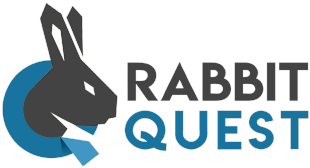Why prizes don't always motivate... 💎 👀
And the winner gets... a wellness day, a healthy recipe book or a gym membership! Want to enthuse employees to join your vitality initiative? Competing together for a prize gives your vitality initiative a game element, and your employees become more fanatical and motivated. But ideally, as an HR manager, you would like to see better health become the driving force. From interviews with 500+ managers, we have seen that prizes affect your vitality initiative differently. Employees may find the price more important than working towards better vitality. Today, we take you through how to put the actual goal of 'health' back on the map.
Time to read: 5 minutes
Prizes provide a short motivation boost
As an HR manager, you are constantly looking for ways to increase employee engagement and motivation, especially when it comes to promoting a healthy lifestyle. One well-known way, of course, is to link rewards to participation or winning a competition. You may have had this idea yourself; you organise a competition within the organisation. For example, employees are encouraged to count their daily steps and compete to win prizes. Everyone is excited and starts walking fanatically. You see people walking more, taking the stairs instead of the lift, and even using their lunch break for a quick walk. It seems to be a success, but when the competition ends and the prizes are distributed, employees gradually or some even stop walking immediately.
At first glance, this seems like an effective way to motivate employees to participate actively. Chances are it activates some employees to get a little more out of themselves and your initiative. But sometimes, a prize may become an employee's main driver. The goal of becoming healthier and more vital then remains in the background, and achieving the prize becomes the biggest motivator.
The downside of external rewards 🔀
Maybe you used to have pocket money for certain chores. Let's use "tidy your room" as an example. As an 8-year-old child, suppose you were to get a euro every time you cleaned your room. At first, it motivated you tremendously. A euro is a lot of money when you are young. A big prize. But after a few times, your parents see that you manage to keep the room tidy well and you don't get a euro for cleaning up anymore. "We've seen that you can do it; keep up the good work!" you hear them say to you. But as soon as the euros stop, your motivation to clean that room disappears. As a child, you're not going to do that "stupid" chore if you don't get anything for it now, are you? The same can apply to prizes in a vitality initiative. Once the external reward disappears, employees' motivation to take healthy steps may disappear along with it. For example, consider an initiative where you reward employees with a gift voucher for achieving their step goal. Once the competition is over and the rewards have been handed out, it could be that the avid sporty employees continue to exercise in their breaks, but other employees no longer keep up with their steps or join in the daily walk-luch.
Creating intrinsic motivation
As an HR manager, you naturally do not initially expect that when using prizes in your vitality initiative, employees will focus on the reward. You expect that the intrinsic pleasure and satisfaction they get from healthy activities is going to be the new motivation. It is not a nice thought that the prize is the motivation rather than improving health and well-being. To turn this thought around, you could emphasise intrinsic motivation. For example, you could spend extra time and attention on intrinsic rewards. Improving health and well-being is a fairly logical reward, but perhaps you can work with the employee to find a more specific and personal reward.
Highlighting personal rewards
For example, consider quitting smoking, where the reward is healthier lungs. This rather general and impersonal reward might not be motivating enough. Think with the employee about a personal disruptive factor, such as not being able to participate in sports activities with children or friends or children avoiding hugs because of cigarette smoke. You can find a reward in different corners; it does not have to be just a prize. If your vitality initiative consists of easy leg muscle exercises, an employee can experience more ease while cycling in their free time. You can also highlight this to employees as a personal reward.
The importance of personal goals 🎯
As an HR manager, you want to set an overall goal every employee can relate to. You probably recognise this. You want initiative to live within the organisation. An easy way is to set up a big overall goal that every employee would agree with. Like, for example, the popular walking challenge where you challenge employees to take a number of steps a day. Or a cycling initiative. The more general your goal is, the further away your initiative can become from personal individual goals. It is precisely these personal and individual goals that can generate intrinsic motivation.
Set personal goals
This is the perfect opportunity for you as an HR manager to occasionally take the focus away from the prize and bring it back to the original goal; becoming more vital. To do this, it is important to encourage employees to set personal goals tailored to their individual needs and interests. For example, think about wanting to eat healthier to lose weight, exercise more to get better sleep or walk to exercise and start a task with new energy. You can do this even before the start of your initiative, for example. By getting employees to think about personal goals that fit the initiative, something that can enthuse them personally, they feel more involved in the process and experience a deeper sense of satisfaction when they achieve their goals. For example, use the monthly check-in to attach a personal goal to your vitality initiative with each employee.
Generate goals within your initiative
You could also start your vitality initiative with a special kick-off day. For instance, plan a moment when every manager and his or her team launch your vitality initiative together. Here, offer a format with questions where each individual can start his or her own goals and then share them within the team. Sharing goals creates more connection in the team and employees can support each other by reminding them of their goal. Make it a fun moment where team members can really come together for a moment and hang personal goals on this initiative. You can shape the kick-off and vitality initiative with fun posters, games where employees learn to make goals or, for example, a special page on the portal or in an app.
As an HR manager, you may have seen how a fanatical employee unknowingly fell back into old habits and behaviours after your initiative ended. Giving a prize may not always be the best motivator. Intrinsic motivation is important to convert a new healthy action into a habit. By focusing on employees' personal goals, a prize can still be a good motivator but will give your vitality initiative a more sustainable effect and promote well-being within your organization.
Want to know more about setting personal goals for each employee? Schedule an appointment with one of us, and let's have a digital cup of coffee soon.




